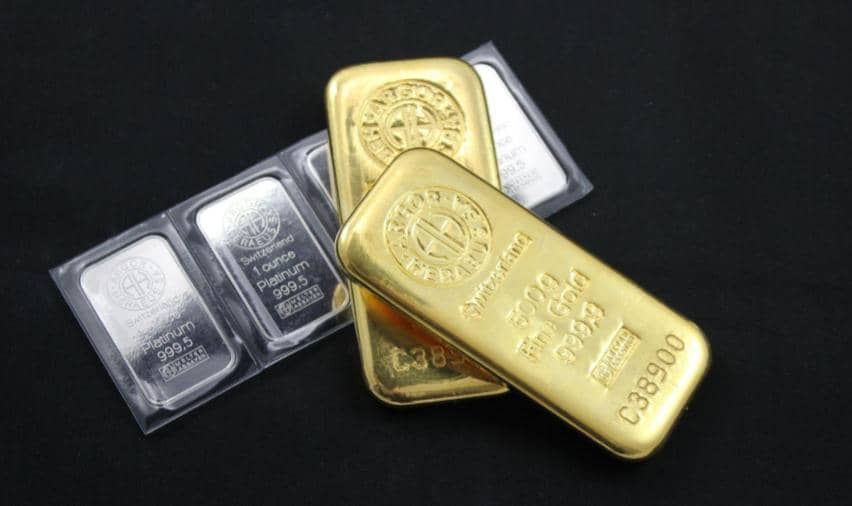Exploring the Uranium investment boom

7 OCT, 2023
By Constanza Ramos


John Ciampaglia, CEO of Sprott Asset Management.
In the ever-evolving world of energy and commodities, uranium has emerged as a focal point of attention and opportunity. The Sprott Uranium Miners UCITS ETF (URNM) has recently made headlines by surpassing $130 million in assets under management, a remarkable achievement given its launch just last year. Behind this milestone is a combination of factors that reflect the growing interest in nuclear energy and uranium as a unique commodity with compelling long-term supply and demand dynamics.
To shed light on this intriguing investment landscape, we talked with John Ciampaglia, CEO of Sprott Asset Management, who shared his insights.
The Sprott Uranium Miners UCITS ETF (URNM) recently achieved a significant milestone by reaching $130 million in AUM. What factors do you believe contributed to this achievement, considering its launch just last year?
Investors around the world are becoming increasingly interested in nuclear energy and uranium. Uranium is a unique commodity with very compelling long-term supply/demand fundamentals. It is the best-performing commodity in 2023 with a gain of nearly 40%. The companies that produce and explore uranium have been beneficiaries of the higher commodity prices and renewed interest in the sector. Investors have been attracted to the Sprott Uranium Miners UCITS ETF because it tracks a pure-play index that provides exposure to the uranium producers, new mine developers, and exploration companies as well as an allocation to physical uranium through holding vehicles such as the Sprott Physical Uranium Trust.
September has seen uranium prices reaching a 12-year high. Could you explain the key drivers behind this surge and its significance in the context of nuclear energy and global energy needs?
Many countries are shifting support back to nuclear energy for a number of reasons. Nuclear energy provides reliable base load power which becomes increasingly important as you add more intermittent renewable energy like wind and solar. Similar to renewable energy, nuclear energy produces almost no greenhouse gas emissions, which is crucial to meeting net zero goals. Finally, the invasion of Ukraine by Russia acted as a wake-up call to the vulnerabilities of global energy markets and economies.
Analysts have referred to the current state of uranium as a "global renaissance." What characteristics of this renaissance make uranium an attractive investment option?
We believe the current renaissance is being driven by a number of energy policy pivots. Similar to the policy response witnessed in the 1970s following the OPEC oil crisis, governments are thinking very differently about energy security. As a result, we believe nuclear energy will have a larger role to play. Public sentiment towards nuclear energy has also improved in many countries which has helped to galvanize political support. Nuclear energy after being put in the penalty box for many years, is now benefiting from a revival. Financial and regulatory support for existing nuclear power plants to continue operating, a growing number of new builds planned globally, and excitement for the commercialization of small modular reactors will translate into growing demand for uranium. At the same time, we have a looming supply deficit of uranium due to the lack of investment in the sector from 2011 to 2020.
In the face of the worsening energy crisis and the imperative to achieve net-zero targets, how does nuclear power fit into the global energy landscape as an efficient, safe, and clean solution?
At COP 26 two years ago, we witnessed a watershed moment when a number of governments publicly acknowledged they would not achieve their net-zero goals without nuclear energy. Governments including the U.S., U.K., Netherlands, Belgium, Finland, Sweden, South Korea, Japan, and France have all pivoted back to nuclear energy with newfound support. The other growing reality is the need to back up intermittent renewable energy sources which have been growing quickly. As more renewables are added, power grids become less stable – what happens if the wind doesn’t blow for 2 weeks? The only way to offset this risk is to have nuclear, natural gas, or coal-fired power stations. Obviously, fossil fuel-based options don’t help to meet net-zero goals.
Even though more than 10 years have passed since the Fukushima incident, how do you see the appetite of investors to invest in nuclear energy? How do you combine investment in nuclear energy with the risks it carries?
The appetite to invest in nuclear energy has changed dramatically over the past 2 years. The inclusion or pending inclusion of nuclear energy into several sustainable finance taxonomies -- including in the EU, UK, Canada, and South Korea -- are prime examples of how attitudes and policies have shifted. There is also a growing understanding that nuclear energy has a good long-term safety track record.
What are the potential risks and challenges associated with investing in uranium mining and nuclear-related ETFs, especially considering the volatile nature of commodities markets?
The key risk is related to the commodity price itself. If the price for uranium declines materially, the profitability for producers will be negatively impacted and prospective producers will not be able to advance their projects. Geopolitical risks can also be a factor for specific companies based on where their assets are located lastly, many of the uranium miners are smaller-cap companies making them inherently more volatile and less liquid.


